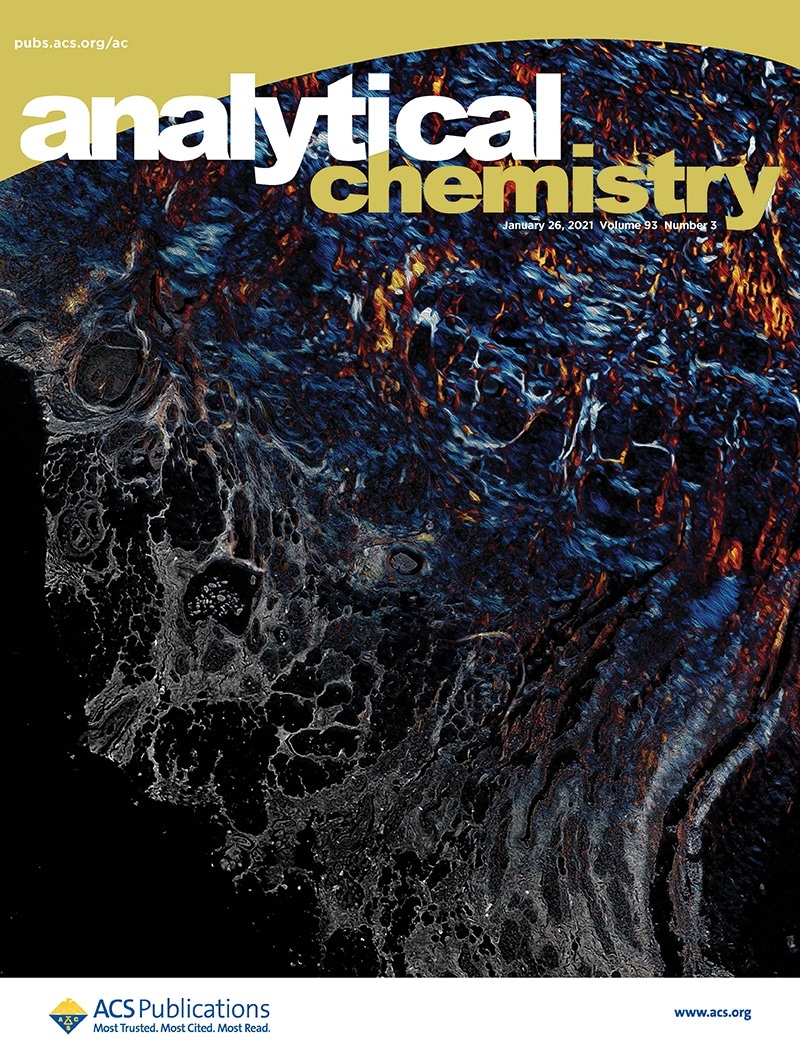Scientists have designed a new spectroscopic microscope to optically measure the orientations and conformations of molecules in biological specimens.

This work was featured on the cover of Analytical Chemistry. The image shows merged vibrational circular dichroism and infrared absorbance images of surgical breast tissue, taken at the same wavelength. Image Caption: Courtesy Analytical Chemistry.
With this innovative measurement approach, scientists can now image microscopic biological specimens more precisely and rapidly.
The novel system is built on the distinct frequency-infrared spectroscopic imaging method designed by investigators from the Beckman Institute for Advanced Science and Technology at the University of Illinois Urbana-Champaign.
This project is about bringing the study of molecular chirality into the microscopic domain.”
Rohit Bhargava, Professor of Bioengineering and Director of Cancer Center at Illinois, University of Illinois Urbana-Champaign
Molecular chirality can be defined as the spatial orientation of atoms present in molecules or multi-molecule assemblies. In the case of biological systems, a single molecule may trigger a cellular response, whereas the mirror image of this molecule is likely to be inactive or even noxious.
Although vibrational circular dichroism can be used to find out the orientation and chemical structure of a molecule, CD measurements involve a considerable amount of time and could not be used in the past to image solid tissue specimens or complex biological systems.
The new article titled, “Concurrent Vibrational Circular Dichroism Measurements with Infrared Spectroscopic Imaging” has been published in the Analytical Chemistry journal and is featured on the journal cover.
The latest infrared microscope helps image biomolecule chirality by speeding up the acquisition time and also enhancing the signal-to-noise ratio of conventional VCD methods.
When you send light down a microscope from a spectrometer, you’re essentially throwing away a lot of it. For VCD measurements, you also have to send the light through a photoelastic modulator, which changes its polarization to left- or right-handed. At that point, you don’t have a lot of light left, which means you have to average your signal for a long time to see just one pixel within an image.”
Rohit Bhargava, Professor of Bioengineering and Director of Cancer Center at Illinois, University of Illinois Urbana-Champaign
Bhargava heads the Chemical Imaging and Structures Laboratory that has accomplished rapid and simultaneous VCD and infrared measurements by leveraging the framework of their discrete, high-performance frequency-infrared imaging microscope. Rather than using a conventional thermal light source, the microscope is based around a quantum cascade laser.
The laser source motivated the whole design. The QCL source has higher power, which means we can acquire faster measurements. Previously, you could only perform VCD on liquid samples, but we can image solid tissues as well. This was never attempted before because it takes so long to acquire VCD signals in the first place.”
Yamuna Phal, Graduate Student Researcher in Electrical & Computer Engineering, University of Illinois Urbana-Champaign
Postdoctoral research associate Kevin Yeh, who jointly headed the development of the microscope, emphasized that other applications may emerge from the infrared microscope designed for this study.
“We initially envisioned the discrete frequency infrared microscope as a platform on which other techniques could be built, We’ve solved one of these extensions, which is VCD, but we could envision many others,” added Yeh.
While the applications of this new method could cover the field of biological sciences, the study itself demonstrates the strength of interdisciplinary science.
“This project was possible only by bringing together thinking from different fields. It’s a chemistry problem solved by a physics-based design, implemented by an electrical engineering student. It’s in our DNA at Beckman to take that kind of approach to solving problems,” Bhargava concluded.
Source:
Journal reference:
Phal, Y., et al. (2021) Concurrent Vibrational Circular Dichroism Measurements with Infrared Spectroscopic Imaging. Analytical Chemisty. doi.org/10.1021/acs.analchem.0c00323.